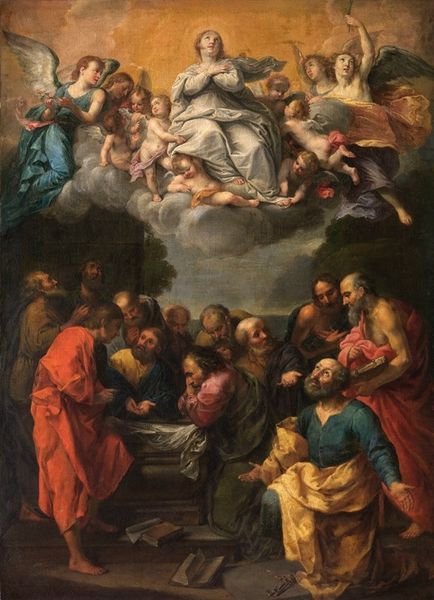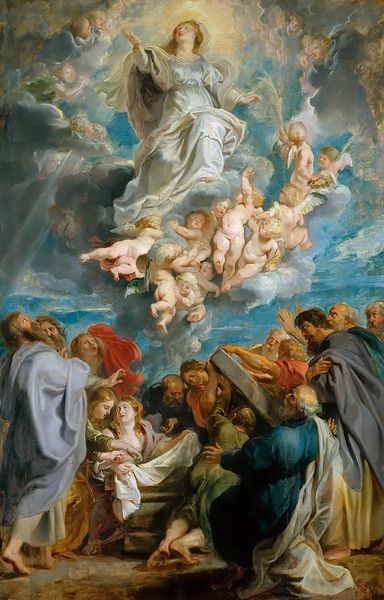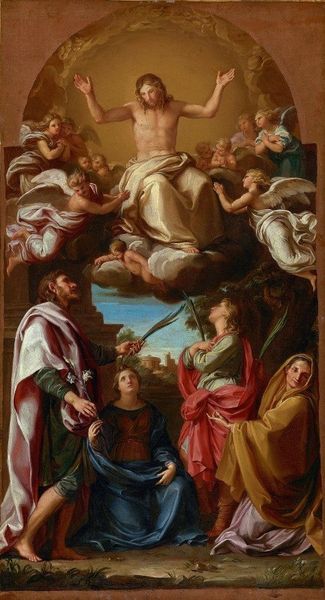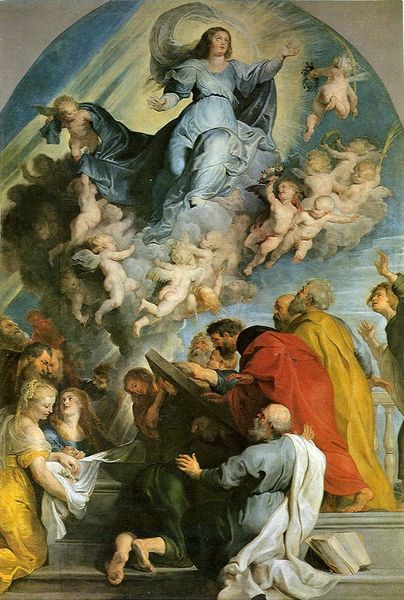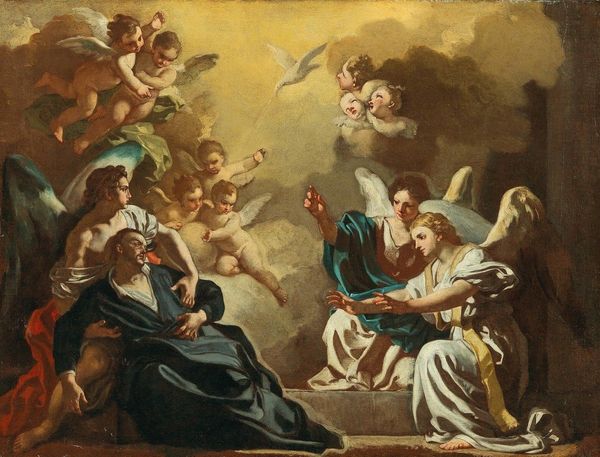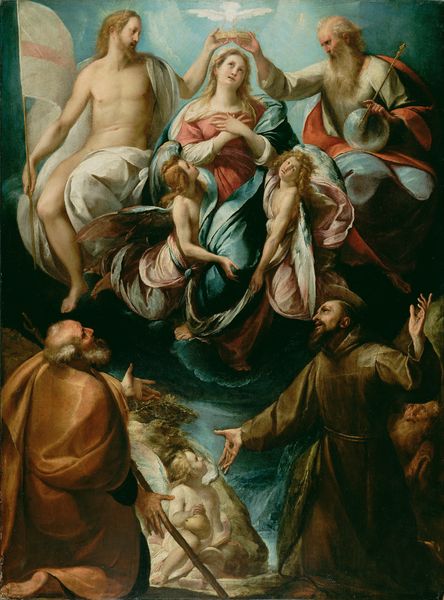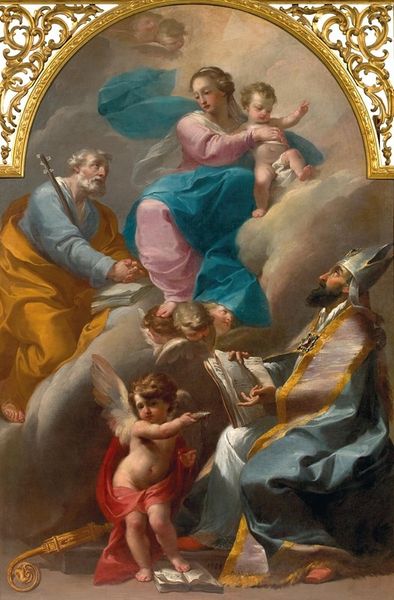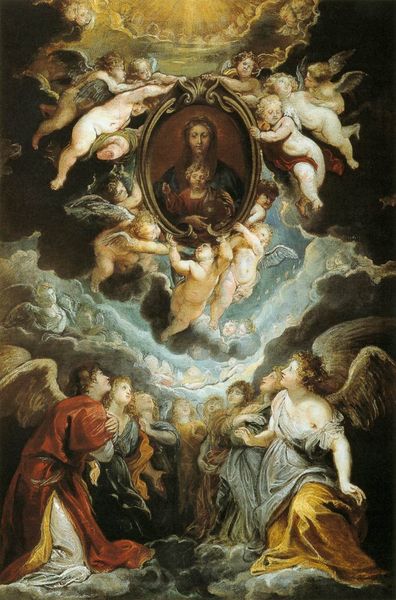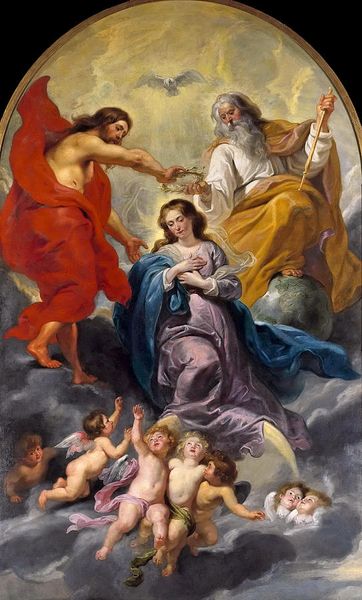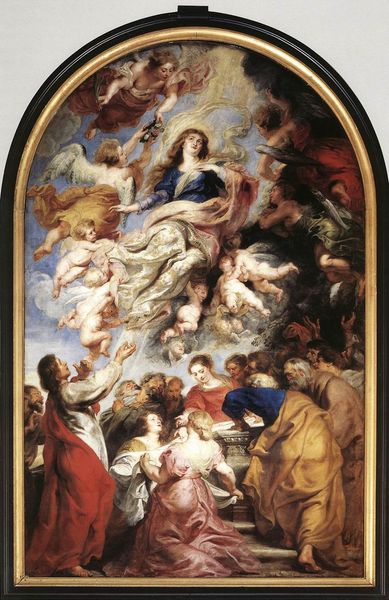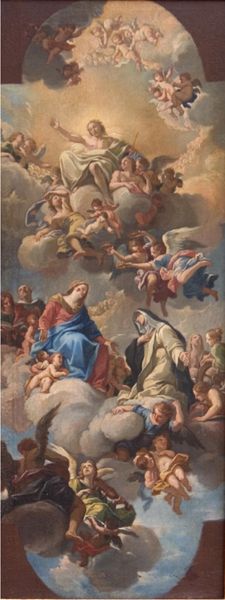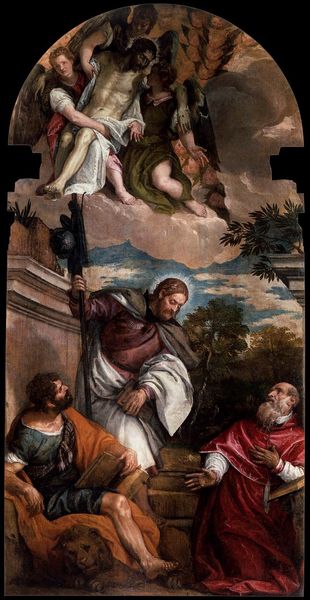
oil-paint
#
baroque
#
oil-paint
#
figuration
#
oil painting
#
history-painting
#
italian-renaissance
Copyright: Public Domain: Artvee
Peter Paul Rubens created "The Assumption of the Virgin" using oil on canvas. The artwork is a symphony of dynamic movement, rich color, and contrasting light, immediately drawing the eye upwards. The composition is structured around two distinct zones: an earthly realm of apostles clustered around the Virgin's tomb, and a celestial sphere filled with angels and a radiant Virgin Mary. Rubens masterfully uses the contrast between the darker, earth-bound figures and the luminous, swirling forms above to emphasize the divine event. Note the use of diagonal lines and upward-reaching gestures that create a sense of ascension. The artist uses color to enhance this division, with warm, earthy tones below and cool, ethereal blues and whites above. Rubens's distinctive Baroque style breaks from the traditional renaissance ideals of balance and restraint. He infuses the scene with emotion and drama, reflecting the changing religious and cultural landscape of his time. Consider how the artwork's structure, with its interplay of earthly and divine elements, reflects a larger discourse about faith, power, and the human condition.
Comments
No comments
Be the first to comment and join the conversation on the ultimate creative platform.
